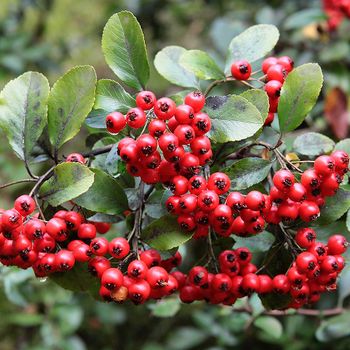Firethorn
From Wikiwel
Other Names : Pyracantha coccinea, Cottoneaster, Scarlet Firethorn, Red Firethorn, Mittelmeer-Feuerdorn
Firethorn is a shrub that belongs to the family Rosaceae. It can group up to 10-15ft It is native to the area the covers Southwest Europe to Southeast Asia.
See also : Nepalese Firethorn
Special Precautions of Firethorn
- The seeds are weakly toxic by hydrocyanic acid releasing glycosides. The pulp and other parts of the plant are free of cyanogenic glycosides.
- The fruit on the Firethorn is only edible after it has been crushed and washed under running water. The main risk with ingestion of large quantities of berries is mild gastrointestinal irritation such as nausea and vomiting, which would happen within 15 to 30 minutes. A choking hazard is also possible if small children try to swallow several berries at once. No other part of the Firethorn plant than the processed fruit should be eaten.
Health Benefits and Uses of Firethorn
Firethorn fruits have been used in traditional medicine owing to their diuretic, cardiac and tonic properties.
